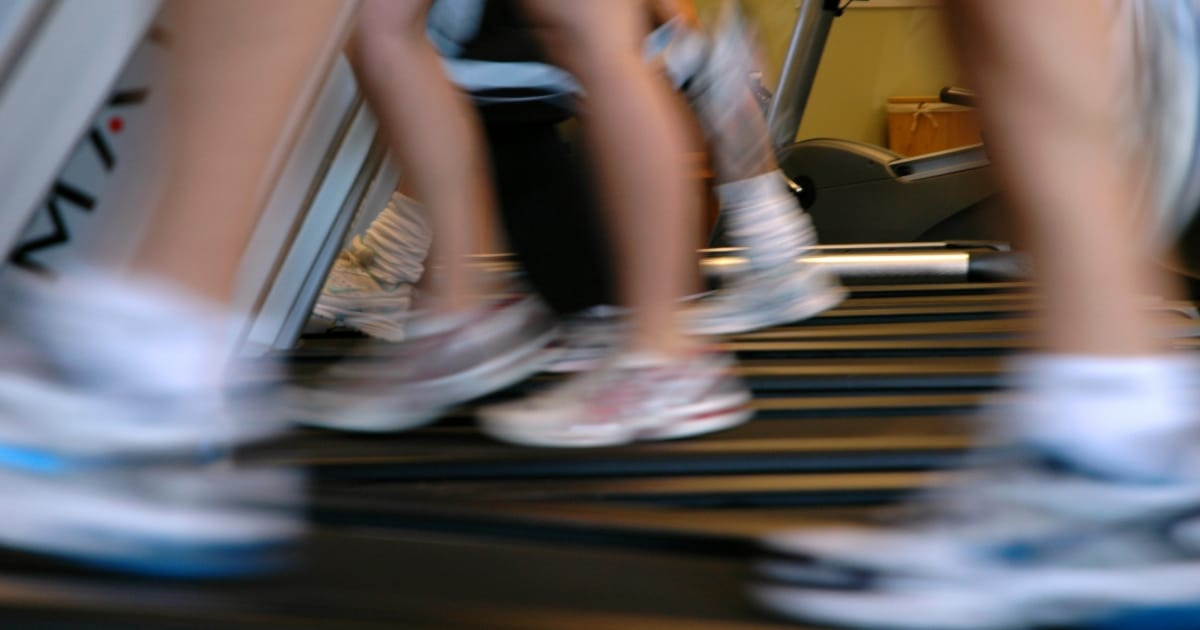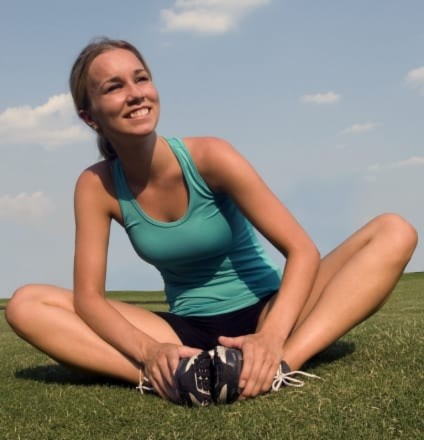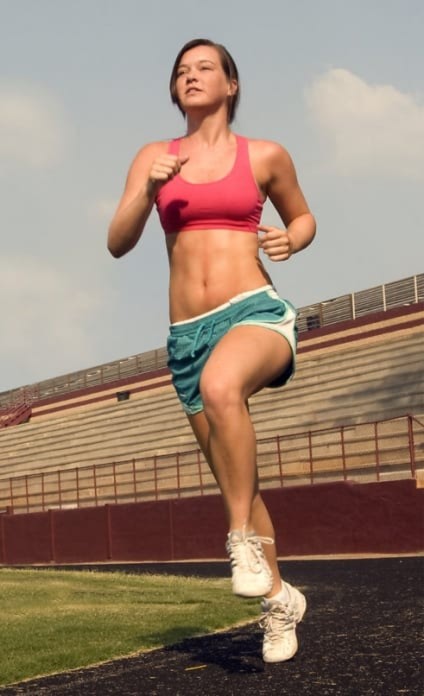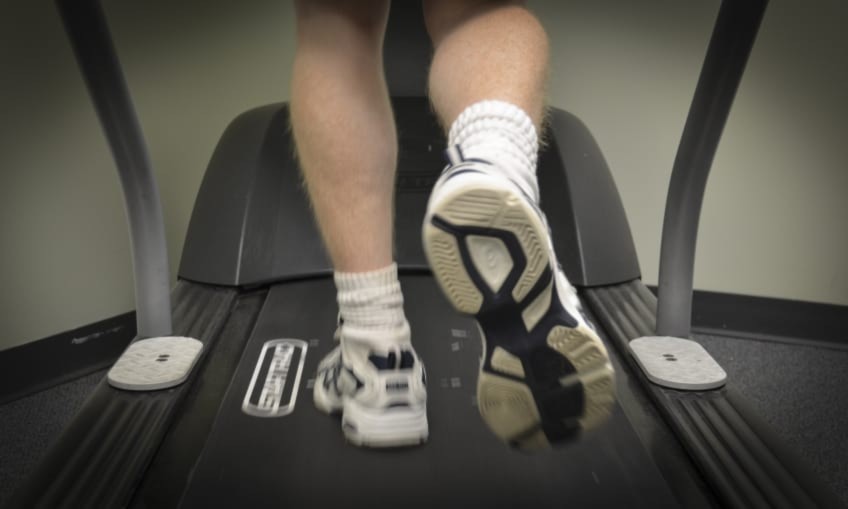
Avoiding Risks To Knee Injury On The Treadmill
Using one of the top-rated treadmills is a phenomenal way to take care of your daily cardio without having to run outside. Whether you’re exercising during the winter or if you prefer to workout in your home gym, relying on a machine can be much more convenient. One important issue that many men and women experience when they start using treadmills is excruciating pain in their knees.
Also known as runner’s knee, there are a variety of side effects of a treadmill on knees that can cause short and long term pain. This guide will help you to determine whether you’re suffering from runner’s knee, how to safely use a treadmill to avoid it, and how to treat the pain.
Symptoms of Knee Injury from Treadmill Use
There is not just one type of knee injury associated with running, diagnosing a problem without seeing an expert is almost impossible. If you are experiencing problems you should see a qualified professional, such as a Physiotherapist as soon as possible.
 Treadmill knee injuries can range from repetitive trauma injuries which could be through overuse, poor running form, wrong trainers or even poor diet. More acute injuries can come on more suddenly like a sharp pain followed by swelling and soreness.
Treadmill knee injuries can range from repetitive trauma injuries which could be through overuse, poor running form, wrong trainers or even poor diet. More acute injuries can come on more suddenly like a sharp pain followed by swelling and soreness.
Out of all of the symptoms you might experience from overusing your treadmill, the first and most prevalent symptom of knee injury from treadmill use is the sensation of pain, this can give you a good indication of the type of injury you have. Typically it will be localized around your front, back, or the area surrounding your knee cap.
When you bend your leg while walking, running, squatting or even sitting down there will be a sharp pain that shoots through your knee and will begin to throb. You’ll also experience pain any time that you have to walk up or down a hill, it’s important to recognize what positions hurt most as this is great feedback for a Physio to help diagnoses.
Due to the biomechanics involved, if you are experiencing pain in the knee it is possible to feel pain elsewhere such as the neck, lower back or ankles. Your body will always try to follow the path of least resistance and if it is experiencing pain somewhere it may compensate with different movement patterns.
Another one of the side effects of treadmill use on knees is swelling. Significant swelling is a good indication that you have a serious injury, trauma to the knee through a fall or overuse may increase blood flow to the area and cause some of the soft tissue structures to become inflamed. Swelling will limit flexibility and mobility, which is your bodies safety mechanism to stop you injuring the area further.
Other symptoms can warmth and redness, if you are experiencing these you should stop running immediately and seek help.
Side-effects of Running on a Treadmill - Hip and Knee Injury [Video]
Tips on How to Avoid Knee Damage
Dealing with knee pain can be extremely uncomfortable as it takes away from daily activities that you would normally be able to do without any hassle. Before you experience the sheer pain of having runner’s knee it’s important to take preventative steps to have a safer workout. Keep in mind these 6 important tips to learn how you can avoid knee damage.
Tip 1: Reduced-Impact Treadmills
As one of the most common injuries that runners experience, treadmill manufacturers are developing new technologies to help reduce the impact that running has on your joints. It’s important to note that treadmills aren’t as cushioned as the grass or a track, but there are certain models that are designed to be easier on your body than regular concrete.
For example, the NordicTrack C1650 treadmill has FlexSelect Cushioning which allows you to adjust the softness of your belt. Depending on how often you work out, you can wear down the shock absorbing features of your treadmill, this is why we would recommend to purchase a high quality treadmill.
If you’re working out at the gym or at home, make sure that you test different machines and read the top-rated gym equipment reviews to find the right one for your needs. Also, stay up to date with maintenance to promote the integrity of your treadmill over the years.
Tip 2: Change Your Impact Force
Christopher McDougall author of Born To Run, spent time with the best distance runners in the world. He noticed a resemblance in how all the great runners looked as though they glided along the surface. If you make a large noise on each foot strike you could be leading to injury, have fun trying to make as little noise as possible.
“When it comes to learning a new footstrike, less isn't just more; it's everything. If you feel your calves burning or your Achilles tightening, you have to back off and re-assess. The problem isn't a lack of strength; it's faulty technique. The beautiful thing about minimalist running is that everything means something, so if you try to ignore discomfort and muscle through, those muscles ain't going to cooperate for long. Stop; take a breather; compare what you were doing to what you should be doing; and try again.” - Christopher McDougall
Tip 3: Finding the Right Shoes

Some of the worst side effects of treadmill use on knees can be avoided by buying the right pair of shoes. In fact, the majority of shoe manufacturers have exclusive lines of footwear that are designed for runners. They put an ample amount of cushioning in the sole to help absorb the majority of the impact, which is why running shoes are typically more expensive than casual shoes.
It’s important to know that among endurance runners it is common knowledge that the more hi-tech the shoes the WORSE they are for you. Runners spend hundred of dollars trying to buy the best and newest trainers, even seeing ‘experts’ to mold them to their feet. It’s a waste of money. Purchase the flattest trainers possible.
Tip 4: Weight/Strength Training
Strength training should be a staple part of everyone’s training regime no matter your goal. It strengthens joints, tendons, muscles, ligaments and bone, which is essential for those looking to run long distances or increase impact across a joint. It can also give you more of an anaerobic workout which has cross over benefits into helping your aerobic endurance, making you be able to run for longer.
Tip 5: Pre-Workout Stretches
Before you get on your treadmill make sure that you’re giving your body the flexibility and support it needs to stay strong while you’re running. A pre-workout stretch is one of the best ways to protect the muscles and ligaments in your knee as it prepares them to be extended and moved. Plus, stretching helps to increase your overall flexibility and reduces any pain after running.
Tip 6: Post-Workout Protein
Another great way to reduce the side effects of treadmill use on knees is to give your body the nutrients it needs to repair itself after working out. No matter how long you’re on the treadmill, your muscles are inevitably being worked. By consuming a high-protein meal after a run, you’re giving your muscles the nourishment they need to bulk up and stay strong. This is also one of the best ways to shorten your recovery time in between workouts, which is why the majority of post-workout supplements have high contents of protein.

How to Recover from Knee Pain
In the event that you’ve been dealing with knee pain because of your treadmill or going out for regular runs, it’s important that you figure out how you can remedy the pain.
Tip 1: Strengthening Exercises
The first thing to do is add strengthening exercises to your pre and post workout routine. The more flexible you are, the less likely you are to experience injuries. Plus, stretching after you work out helps to release lactic acid so your muscles don’t tighten and become sore after a great run.
Tip 2: Hot and Cold Packs
If you’ve ever pulled a muscle before, you’re undoubtedly aware of how applying hot and cold packs can help to increase blood flow to your muscles meanwhile numb the pain. In order for your knee to start healing, it’s going to need blood flow to bring nutrients into the tissue and this is stimulated by the use of hot packs. To help reduce swelling and inflammation, consider replacing the hot packs with cold ones. This will also help to numb any pain.
Tip 3: Rest
Above all, ensure that you rest your knee until it is healed. In the event that you workout too soon to the injury, you run the risk of damaging the tendons further and increasing the amount of time it would take to heal.
“First focus on getting easy, because if that's all you get, that ain't so bad. Once you can run easy, focus on light. Once you get light, focus on smooth. By the time you're easy, light and smooth, you won't have to worry about getting fast--you will be." - Christopher McDougall
Know you know how to look after your need, perhaps it's time to upgrade your treadmill, so take a look at our best treadmills for home use reviews.
Add new comment